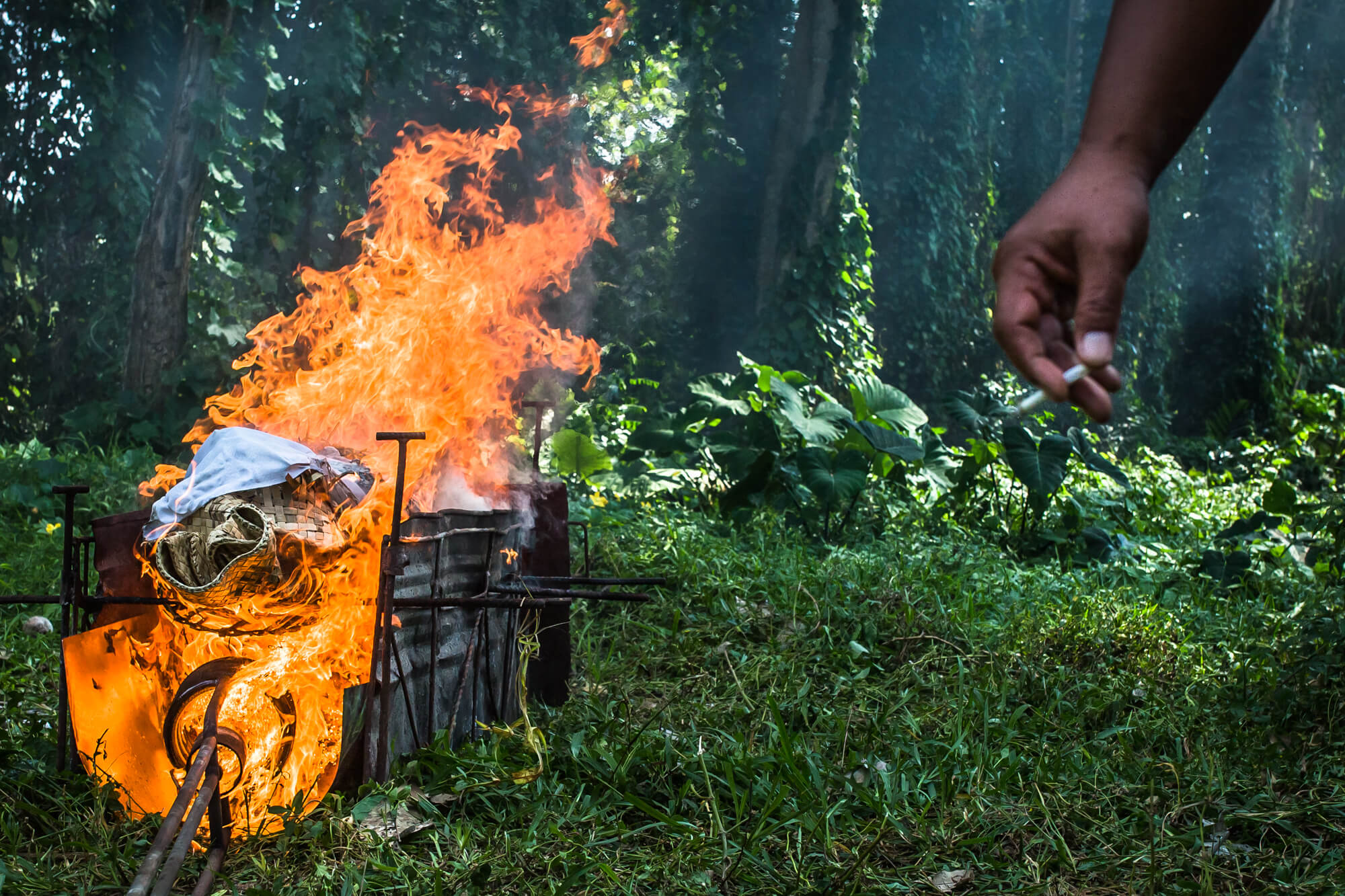A few weeks ago I travelled to Bali to take part in the Foundry Photojournalism Workshop, as I try to do each summer that I’m able to make it. This was my third time, and the people you meet there really do become part of your photo family forever. I go just as much to see old friends as I do to learn from some of the best photographers working today. In short, I highly recommend it and please feel free to email me with any questions if you’re interested.
In the weeks leading up to it I was considering possible projects and story ideas and while doing some research, the Balinese tradition of funerals and cremations stood out to me. Not for its morbidness per say, but instead for its celebration of life and the spirits. The Balinese always cremate in order to give the body and soul back to the five elements from which we came; earth, fire, water, air and ether.
Known as Ngaben, these cremations can be grand and expensive affairs if the family can afford, or fairly humble ones as well, as was this one that I documented. If a loved one dies and the family doesn’t have sufficient funds, it’s not uncommon to bury the deceased, for years even, exhuming them once a proper ceremony can be afforded. Many villages will also conduct group ceremonies to help share in the costs. I was also fortunate enough to see and photograph a very large ceremony for a member of royal family as well, and may share those images later as well, but since they were quite different from these scenes, I’ll leave those to another post.
Once on the ground, I started looking and asking around hoping to find a funeral, which didn’t prove so easy at first. To start, it was an important holiday week in Bali, akin to the Western week of Christmas and New Year, and I was told by many locals that there would be no cremations this week, as it wasn’t a good time. The Balinese closely watch their astrological and spiritual calendars looking for the best days to conduct the cremation. Luckily enough I met a local guy who became my fixer and was awesome enough to find me a ceremony which took place during the workshop, and even escorted me there, assuring that the family and villagers were ok with me photographing, as well as making sure I adhered to any cultural norms and sensitivities, which there can be quite a few!
Here’s the final project I presented at Foundry (which was only 10 images but I’ve added in a few more here), documenting the funeral and cremation of one elderly woman who had recently passed. Even though she didn’t have any immediate family, the villagers all turned out in true Balinese fashion to bid her farewell.
This man was the priest who conducted the rituals. They come from the Brahmin caste of holy men, and such duties are passed down from generation to generation. Of course he looks quite young and even hip, and I couldn’t help but wonder what he does in his normal life. Before things started, he was sitting around just like everyone else, chiefing cigarettes, chatting and laughing.
Taking place inside a family’s compound, the villagers all turned out in their best dress, sitting patiently as the rituals and processes were done one by one, and most spending the several hours it took to complete them all, from the preparation to the burning to the return to the sea.
She was 84 years old and called Padma, and had passed only several days prior. She was taken from her resting place out into the sun where she was carefully washed, decorated and re-wrapped in preparation for the cremation.
In contrast to Western funerals which are usually somber affairs, the Balinese showed few signs of sadness, and were even perhaps joyful, that their loved one lived a good life and was now returning to the elements.
Once the body was fully prepared, she was put on this cart and taken to the nearby cemetery. Along the way, the pall bearers stop and run in circles several times, hoping to confuse the soul so that it doesn’t return to the body and to lose any evil spirits that may try to follow the body.
At the cemetery a few prayers and blessings were spoken as they prepared for the ignition.
It came as a bit of a surprise to me, but they use gas burners rather than wood, though actually it makes much sense. Even with two large gas burners, it took nearly an hour to complete, and wood would have been much slower of course. I was also intrigued by the people who run the service providing the gas and burners. To think that their full time job is to burn bodies just struck me as a bit odd, but in further thought, it’s really no different than a coroner or funeral director in the West perhaps.

The villagers waited as the burn was taken to completion, with women on one side and men on the other for the most part.
When the burn was complete, the ashes were cooled and some people sifted through them looking for items put on the body that had survived to take as memoriam.
Once all collected, the ashes were carefully wrapped with everyone’s cooperation, each hoping to get a brief final touch.
Part of the return to the five elements is water, so following tradition the ashes are taken to the coast. Bali is an island of course, so there’s always a coast not too far away. For this one, we rode about ten miles from the village, with everyone in tow in trucks and cars, and of course celebrating rather than mourning.
After some further prayers, her ashes were put into the water, thus completing the ceremony and the cycle, returning us from which we came.





















nice .. and your work, at least in these photos, didn’t seem to intrude into the event
Thanks Gregory! Yes, that’s always the goal when we work, to be there but be invisible.